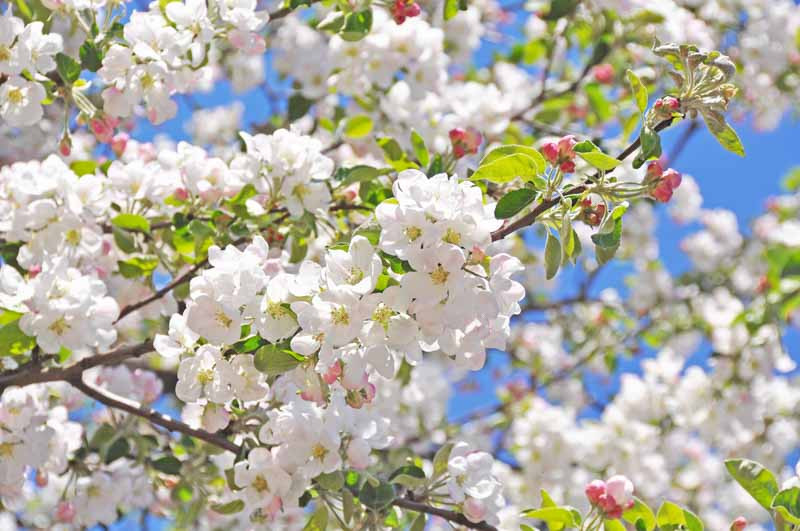Crab Apple
Crabapple trees, members of the Malus genus, are small to medium-sized deciduous trees known for their spectacular spring blossoms and ornamental fruits. They typically exhibit a rounded, dense habit, making them excellent choices for both focal points in landscapes and for providing shade in smaller gardens.
Hardiness: In terms of hardiness, crabapple trees are robust and adaptable, thriving in USDA zones 4 through 8. They are capable of enduring a variety of soil types, though they prefer well-draining, slightly acidic soils. Once established, they show a good level of drought tolerance, adding to their appeal to gardeners in different regions.
Flowers: The flowers of crabapple trees are arguably their most striking feature, blooming profusely in spring. The blossoms can range in color from white and pink to deep red, depending on the variety. They generally last for several weeks, providing a stunning display and attracting a myriad of pollinators. Following the bloom, the trees produce small, colorful fruits that persist into winter, offering visual interest and food for birds.
Uses: In terms of uses, crabapple trees are versatile. They can be planted as specimen trees, integrated into mixed borders, or used for espalier. Certain varieties with larger fruits can even be harvested for making jellies and preserves.
Benefits: The benefits of planting a crabapple tree extend beyond their ornamental value. They are excellent for supporting biodiversity, providing nectar for pollinators during their bloom time, and offering habitat and food sources for birds and other wildlife throughout the year. Additionally, their relatively small size makes them suitable for urban and suburban gardens, bringing a touch of nature’s splendor to built environments.

